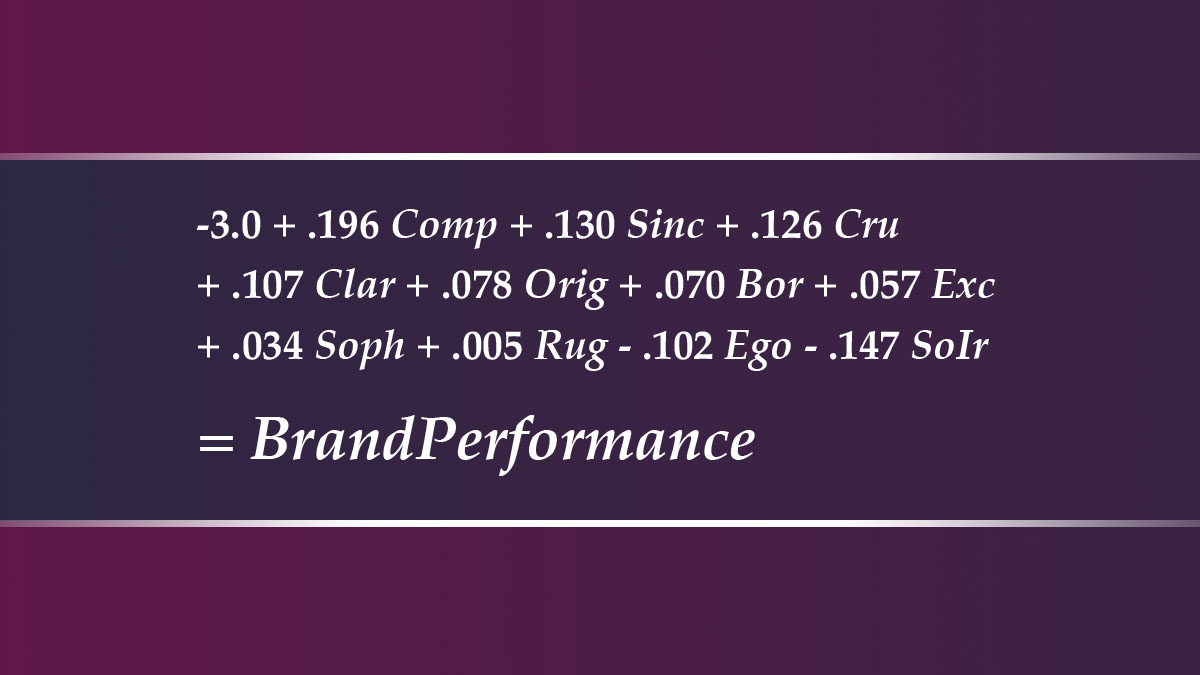Background
It is essential for brands to find unique ways to gain a competitive advantage by differentiating themselves from their competitors. The Zion & Zion market research team is engaged in an exclusive in-depth series of studies to understand how consumers perceive the personalities of top U.S. brands. This article is the fourth in our new series on 45 major brands in 15 industries (see tables 1 and 2). In this series, we analyze how top brands are perceived across three key brand personality scales: Aaker’s (1997) classic five dimensions of brand personality, Freling, Crosno, and Henard’s (2011) brand personality appeal dimensions, and Haji’s (2014) negative brand personality dimensions. In the first three articles of our series (see here), we investigated how the brands score on each of the three scales and what clusters they form. In this article, we explore the impact various brand personality dimensions have on brand performance. In future articles, we will perform deep-dives into the 15 industries and more.
Table 1. Industries Included in this Study
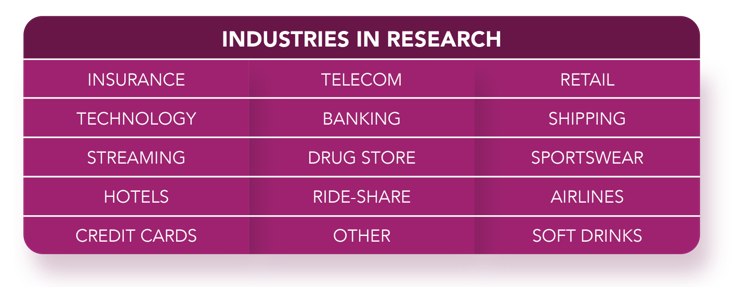
Table 2. Brands Included in this Study
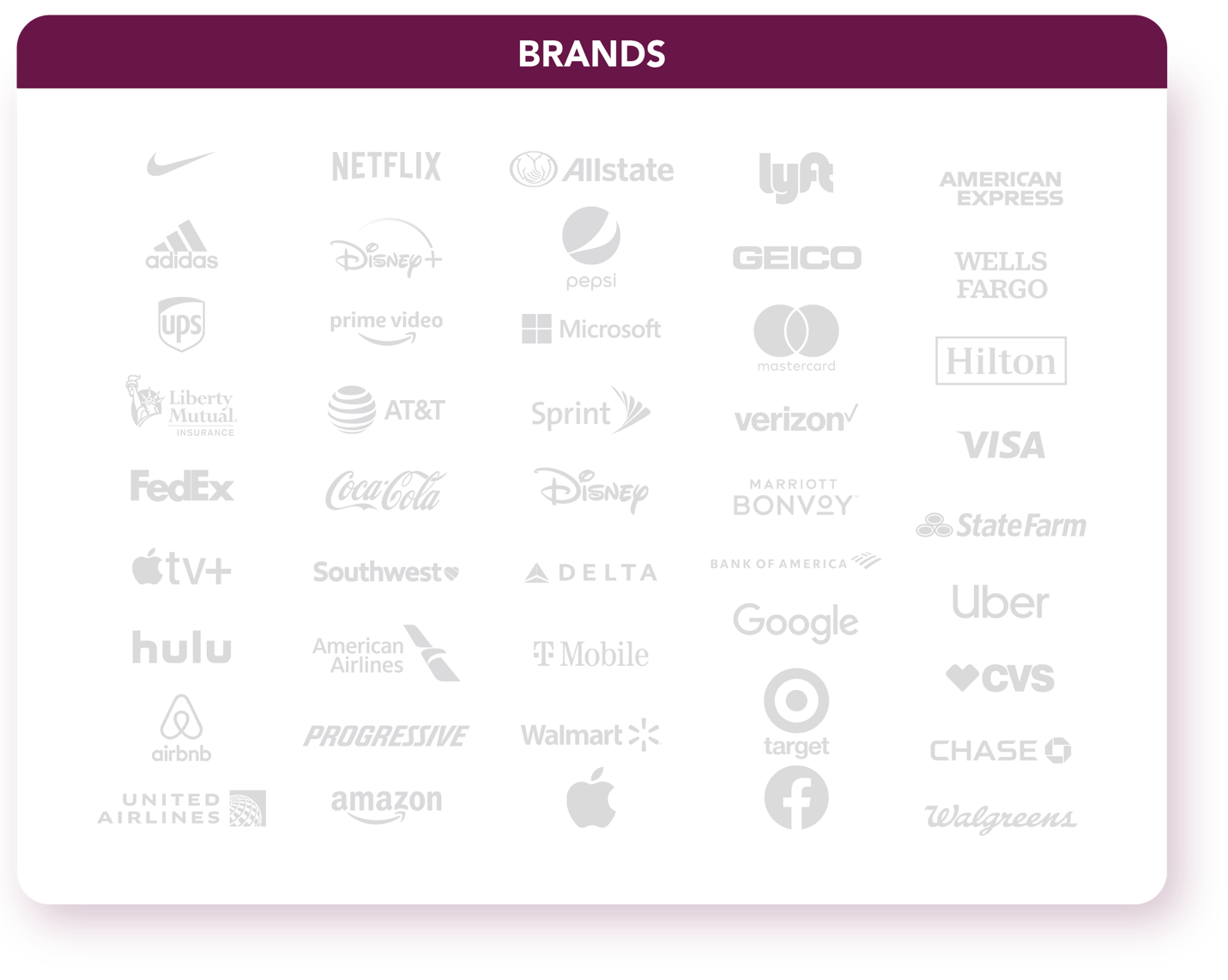
Executive Summary
The Zion & Zion research team sought to gain a deep understanding of the brand personalities of 45 top brands in the U.S. The brands were selected based on established brand value and industry leadership rankings. We surveyed 9,309 adults, 18 years of age and up. Each respondent was asked about one of the brands. Respondents in our survey were also asked to rate their familiarity with each brand on a scale of 1 to 7, with 1 being very unfamiliar and 7 being very familiar. Only respondents who answered that they were at least somewhat familiar (5 or higher) were retained for the study, which resulted in a data set of 6,444 responses.
In this article, we perform regression analysis on all 45 brands in the sample based on their brand performance scores. We first create the brand performance scores by using factor analysis to combine 5 desirable brand outcomes. We then take the 11 brand personality dimensions (see table 3) and use regression analysis to find which of these 11 dimensions drives the brand performance and to what extent.
Table 3. Brand Personality Dimensions
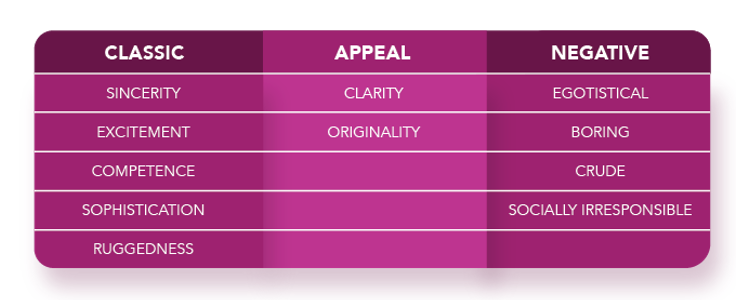
Brand Performance
The ultimate goal of all management decisions is to achieve positive consumer behavior outcomes. Purchasing your brand over a competitor’s offering is one of those outcomes, but only one. Brands also desire that consumers recommend them to others because such recommendations can lead to additional purchases. Brands furthermore benefit if consumers are willing to pay more for their brand, if consumers feel good doing business with them, and if consumers have a favorable attitude towards their brand. We measured all five of these outcomes on 7 point Likert scales. We then aggregated the five outcomes into one single measure, the brand performance, using factor analysis. Table 4 shows the result of the factor analysis, where the loadings indicate the strength of influence each of the five elements has on overall brand performance. We see that the five elements are close in impact but that “feeling good doing business with” has the highest impact while “willing to pay premium” has the lowest impact.
Table 4. Brand Performance Factor Analysis

What Drives Brand Performance
Each brand in our top 45 brands has its own unique profile of the 11 brand dimensions. Some brands have a relatively high score on sophistication, other brands have a relatively high score on ruggedness, and so on (see our previous articles in this series for an overview of the brand personality profile for the 45 brands). We used regression analysis to investigate how the 11 brand personality dimensions drive the brand performance (see table 5 for the result of the analysis). With this analysis approach we can answer the question, “Which of the 11 dimensions is beneficial or detrimental to brand performance?” and “What difference does scoring higher on any single dimension make to the brand?” We use standardized coefficients to allow comparisons across all 11 dimensions. All 11 brand personality dimensions have a significant impact on brand performance.
Table 5. Regression analysis results, Dependent Variable = Brand Performance
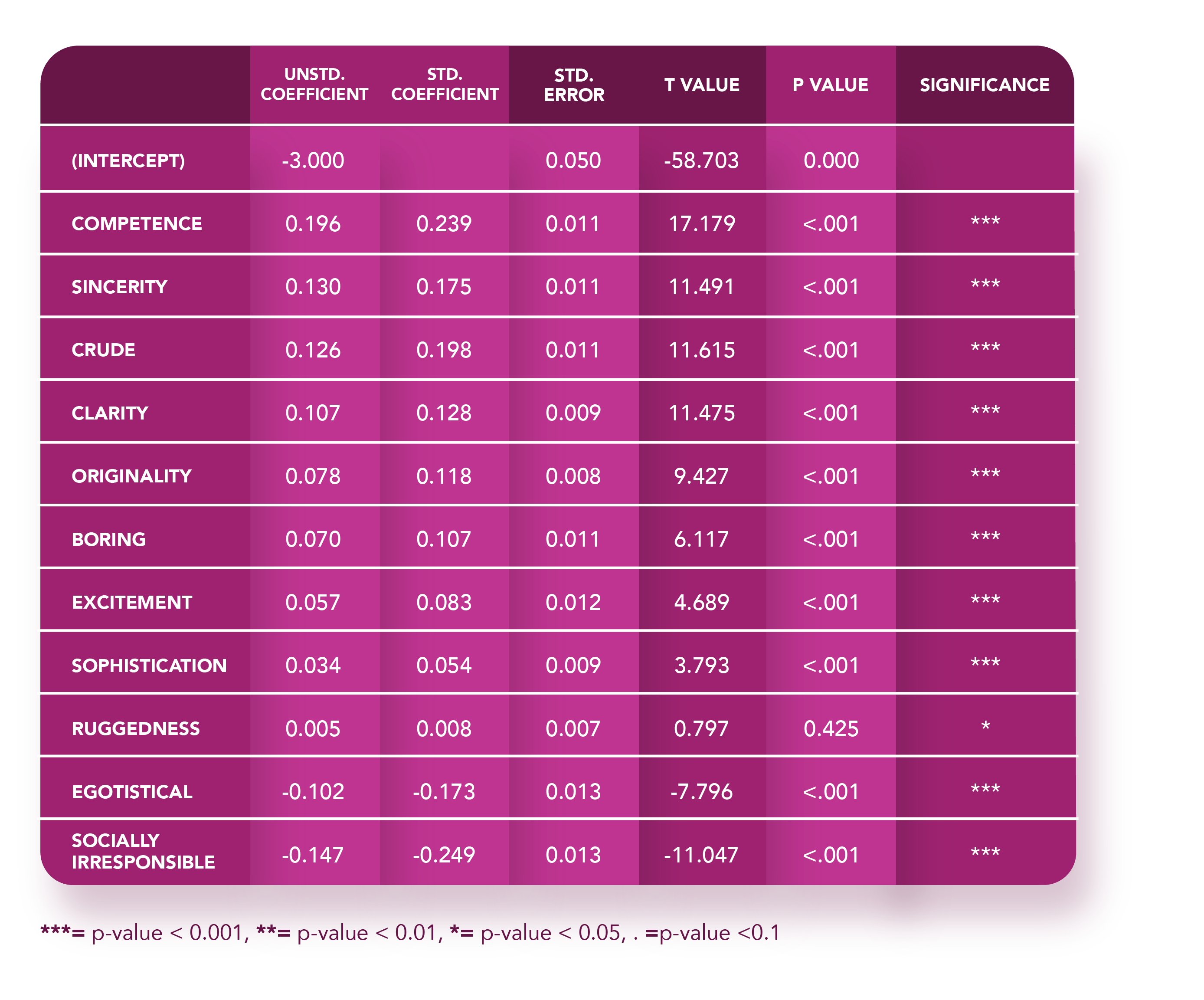
The result of this regression analysis shows for each of the 11 dimensions what impact scoring one standard deviation higher on the dimension has on the brand performance. We can see in the table that competence is the personality dimension that has the highest impact on brand performance, followed by sincerity, while ruggedness has the lowest impact. Being seen as competent has a substantial positive effect on brand performance. It also immediately jumps out that two of the four dimensions of negative brand personality (NegBP) make it into the top four dimensions in impact, but they have negative coefficient values. This negative coefficient indicates that being seen as egotistical or socially irresponsible lowers brand performance substantially. The high ranking of the impact of NegBP underscores the importance of understanding the dark side of brand personality. We will dive deeper into this topic in our next article in this series.
Interpreting The Data
When interpreting the data shown on the table, it is important to keep in mind that each brand has its own unique profile that needs to be understood in relation to the brand’s positioning and target segment. It would be misleading to see this as a competition where a brand is strong only if it scores high on all appeal facets and low on all negative facets. Furthermore, the ranking of brand personality dimensions and the level of impact for each dimension can vary between industries. We will dive into the regression analysis for each industry later in our series. Brands can also perform well if they have middling scores on all of these dimensions, so this is not a hard and fast judgement, but brands would generally not like to be seen as scoring both low on appeal, and high on negative facets. The caveat is that being perceived negatively by some consumers may be acceptable if the brand’s target segment sees the brand in a positive light.
Particularly useful, and to the best of our knowledge, an analysis that has never been performed before, is the fact that this study facilitated our constructing a “Brand Performance Equation,” based on the 11 dimensions of positive and negative brand personality. Our Brand Performance Equation enables a given brand to use the Haji and Aaker scales to measure how that particular brand scores on the 11 dimensions and to use the equation to predict that brand’s Brand Performance.
Putting the Data to Work
This article is the fourth article in our multi-part series, where we will look at each of the brands in 15 industries in more detail. Later in this series, we will look at how each brand’s profile matches up with its competitors, what facets are key for market success in each industry, and we will also evaluate a series of industry-specific questions.
The Zion & Zion research team encourages marketers to look at how they want their brand to be viewed by consumers and look for ways to distinguish themselves from the pack. In our series we will show that by picking and choosing specific areas to improve, brands can distinguish themselves from the pack. Our series can thereby show how such differentiation can help brands to gain a competitive advantage.
